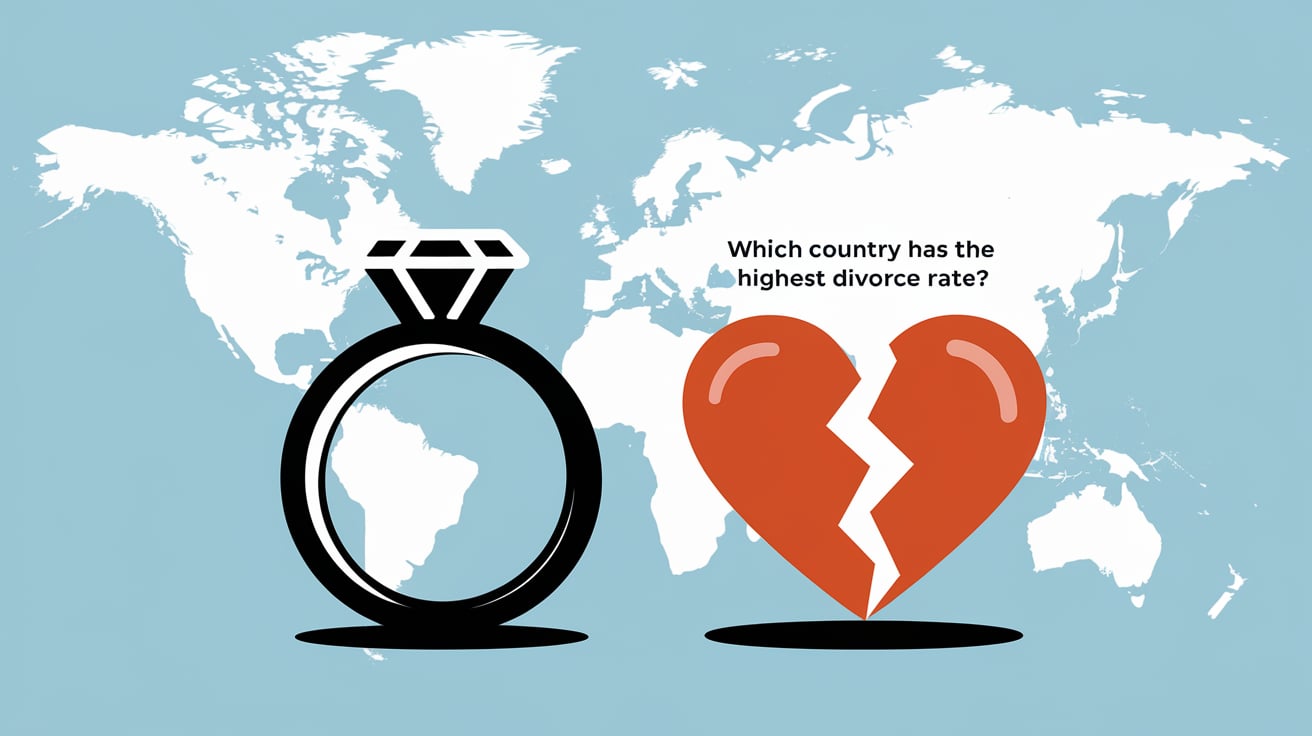Divorce rates vary significantly across the globe, influenced by cultural, economic, legal, and social factors. Among all countries, Maldives has historically recorded the highest divorce rate, earning a reputation as the “divorce capital of the world.” This article delves into the reasons behind this phenomenon, provides comparative data with other countries, and analyzes the broader implications for family law and society.
Divorce Rates: A Global Comparison
According to recent statistics, divorce rates are measured as the number of divorces per 1,000 people annually. The Maldives tops the list with an average of 5.52 divorces per 1,000 inhabitants, a figure that dwarfs the global average.
Here is a comparative snapshot of countries with high divorce rates:
| Country | Divorce Rate (Per 1,000 People) |
|---|---|
| Maldives | 5.52 |
| Russia | 4.7 |
| Belarus | 4.1 |
| United States | 2.7 |
| South Korea | 2.1 |
Why Does the Maldives Have Such a High Divorce Rate?
The exceptionally high divorce rate in the Maldives can be attributed to several factors:
- Cultural Practices:
- The Maldivian society historically permits easy dissolution of marriages under Islamic law. A husband may divorce his wife by pronouncing “talaq” (divorce) three times, which simplifies the process compared to other legal systems.
- A strong tradition of early marriage often leads to unions formed with little preparedness, resulting in a higher likelihood of separation.
- Social Norms:
- Divorce is not stigmatized in Maldivian culture. Instead, it is seen as a normal part of life, allowing individuals to remarry multiple times.
- Economic Factors:
- Women in the Maldives have access to financial independence through tourism-related jobs, enabling them to leave unsatisfactory marriages without facing severe economic hardships.
- Legal Simplicity:
- The legal framework in the Maldives makes divorce proceedings straightforward and accessible, further contributing to the high rate.
Other Countries with High Divorce Rates
- Russia:
- Economic instability and social pressures contribute significantly to Russia’s high divorce rate of 4.7 per 1,000 people. Many couples cite financial stress as a primary reason for separation.
- United States:
- In the U.S., divorce rates have declined over the last few decades but remain relatively high at 2.7 per 1,000 people. The decline is partially due to changing attitudes toward marriage and increased cohabitation.
- Belarus:
- Cultural changes, along with economic challenges, lead to high divorce rates in Belarus. Modernization and urbanization have also influenced marital stability.
Implications for Family Law and Society
The phenomenon of high divorce rates, particularly in the Maldives, poses challenges and opportunities for family law and social policies:
- Strengthening Family Counseling:
- Governments can promote family counseling and premarital education programs to help couples navigate marital challenges.
- Revisiting Legal Frameworks:
- Simplified divorce laws, while accessible, might benefit from added requirements such as mandatory mediation to encourage reconciliation where feasible.
- Social Awareness Campaigns:
- Efforts to educate the public about the emotional and economic consequences of divorce can help reduce impulsive decisions.
- Children’s Welfare:
- High divorce rates necessitate robust legal protections for children to ensure their well-being, custody arrangements, and financial support.
Conclusion
While the Maldives holds the highest divorce rate globally, it is a reflection of unique cultural, legal, and societal dynamics rather than a direct indicator of social failure. By examining these nuances, policymakers and social scientists can better understand how to support families worldwide. For countries with rising divorce rates, lessons from the Maldives can help shape effective interventions, striking a balance between individual freedom and societal stability.
Stay tuned to apnaqanoon.com for more in-depth analyses of legal and social issues affecting families worldwide.









